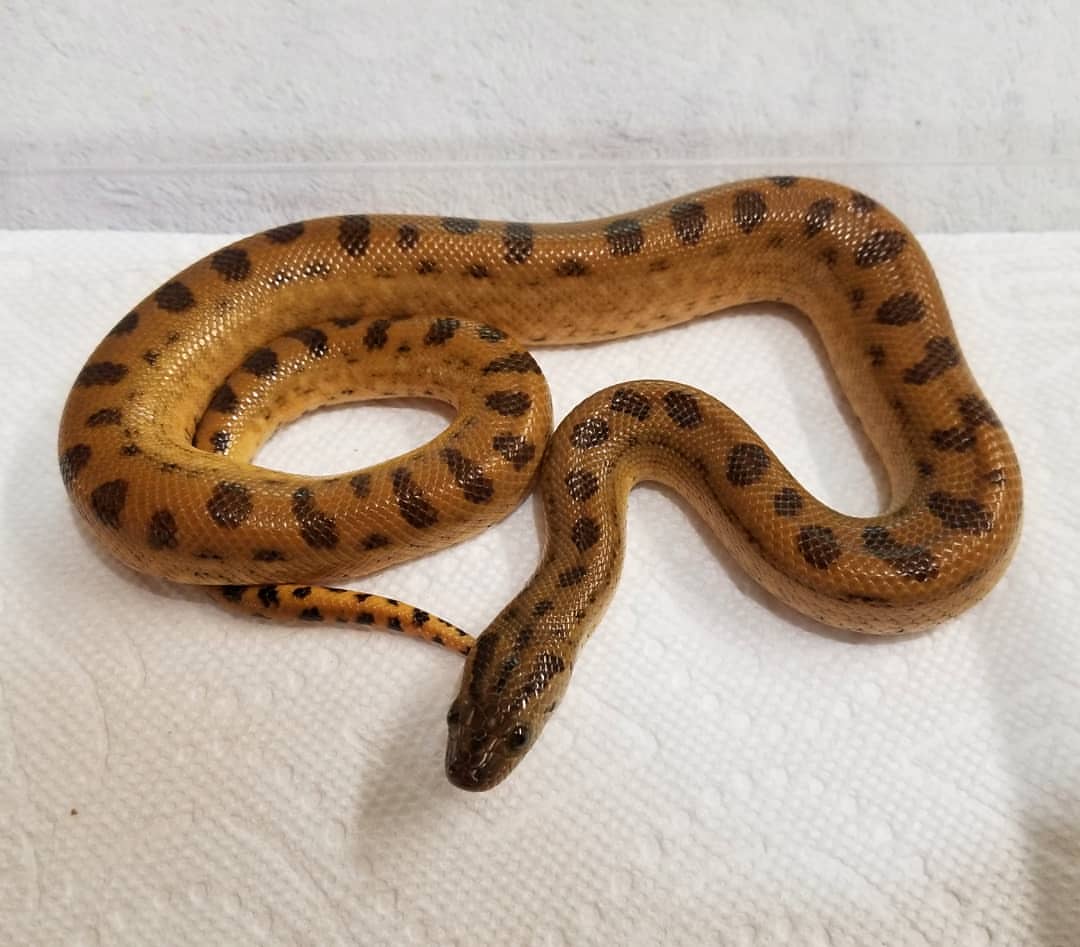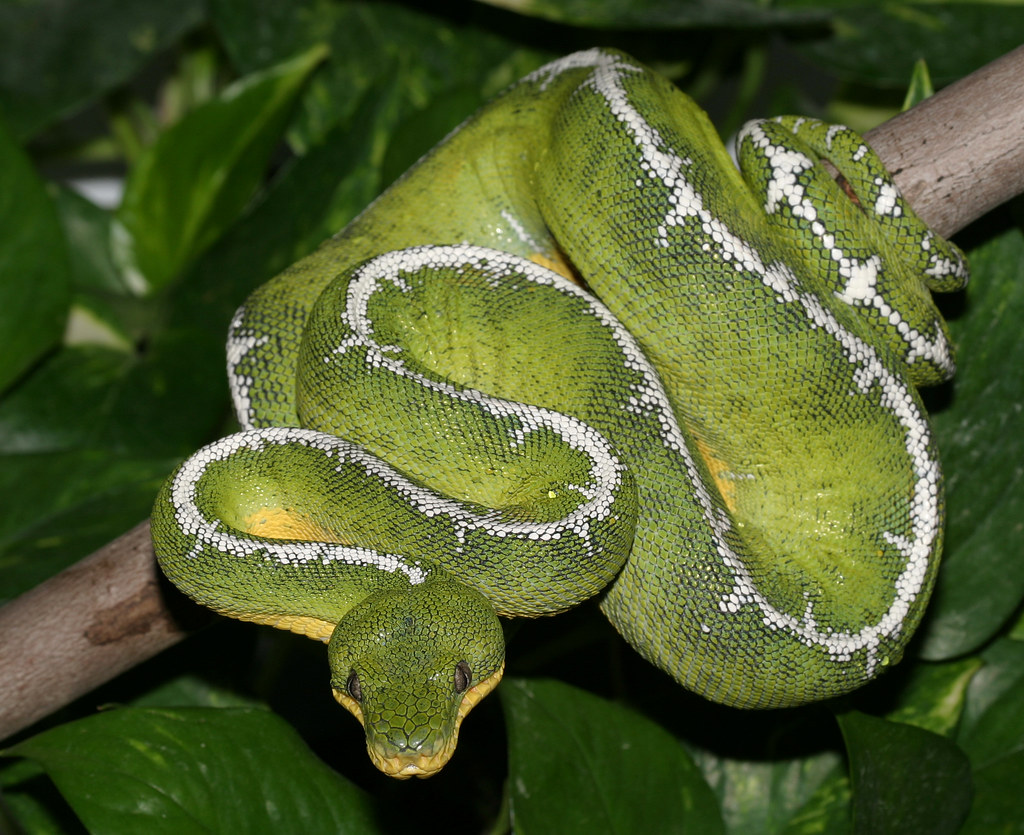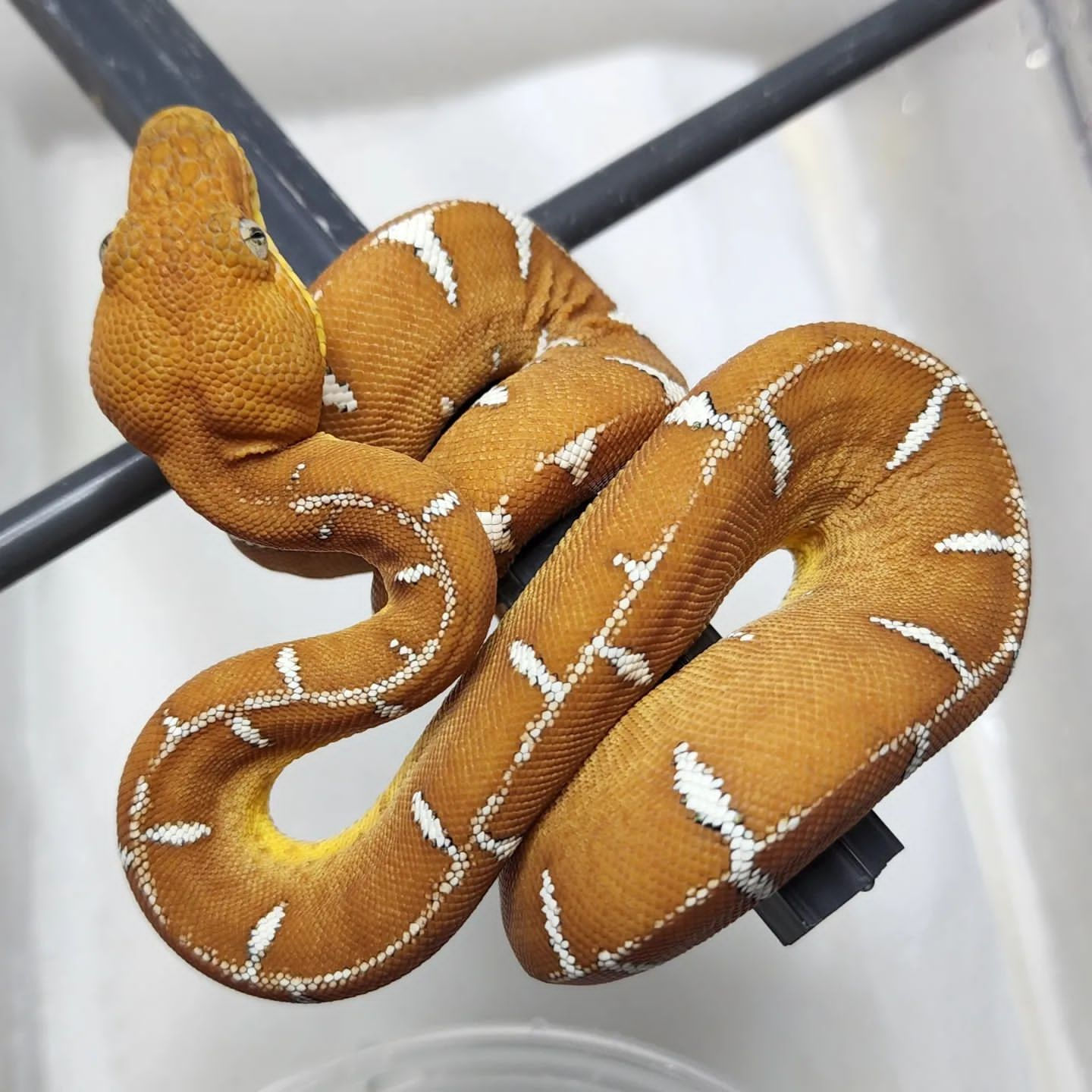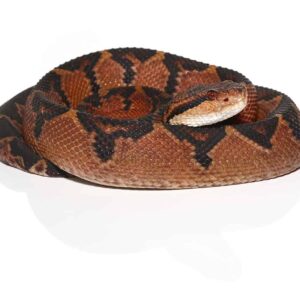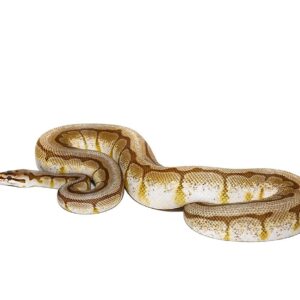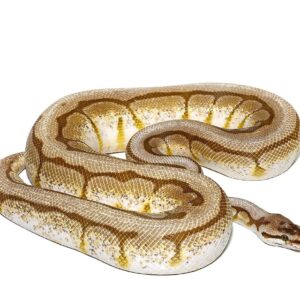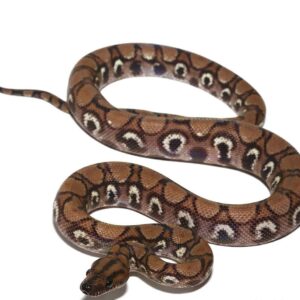Amazon Basin Emerald Tree Boa For Sale
$2,000.00
Amazon Basin Emerald Tree Boa
It is the Amazon Basin Emerald Tree Boa (Corallus Batesii) is an impressive and impressive species of snake that is native in the forests of South America. With its vibrant green coloring and intricate patterning the Amazon Basin Emerald Tree Boa is truly a spectacle to behold.
Appearance:
The most impressive characteristics that the Amazon Basin Emerald Tree Boa is its gorgeous hue of emerald green. This vivid color is due to the combination of blue, yellow, and red pigments within the scales of the snake which are overlapping to produce the stunning hue. The body of the snake is decorated with a variety of dark brown or black crossbands, which give it an attractive and distinct design.
Description
The Amazon Basin Emerald Tree Boa, scientifically known as Corallus batesii, is a mesmerizing species belonging to the Boidae family. Renowned for its vivid emerald green coloration, this snake stands out as a remarkable example of the rich biodiversity found within the Amazon rainforest. The striking hue of its scales, often adorned with white or yellow markings, has earned the boa its name and a unique position among the various reptilian inhabitants of this lush ecosystem.
Found primarily in the dense, humid regions of the Amazon Basin, this arboreal species thrives in the canopy layers of the rainforest. The Amazon Basin Emerald Tree Boa’s natural habitat encompasses the vast tropical rainforest, extending across several South American countries, including Brazil, Peru, and Colombia. The snake’s ability to blend seamlessly into the verdant foliage of its environment not only aids in camouflage but also underscores the intricate balance of life within this vital biome.
Herpetologists and reptile enthusiasts alike hold the Amazon Basin Emerald Tree Boa in high regard, not only for its stunning appearance but also for its fascinating behaviors and adaptations. Its prehensile tail and heat-sensing pits enable it to navigate and hunt efficiently within the treetops, preying primarily on birds and small mammals. This species’ contribution to the ecological fabric of the Amazon is significant, as it plays a role in controlling the populations of its prey and maintaining the health of the forest ecosystem.
By exploring the life and characteristics of the Amazon Basin Emerald Tree Boa, we gain a deeper appreciation for the complexity and beauty of the rainforest. This introduction sets the foundation for a comprehensive understanding of a species that truly embodies the wonder and diversity of one of the world’s most crucial natural habitats.
Habitat and Distribution
The Amazon Basin emerald tree boa, a mesmerizing creature of the rainforest, thrives within the dense and humid environments of the Amazon Basin. This region, renowned for its intricate ecosystems, provides an ideal habitat for the emerald tree boa, which is often found in the upper canopy layers of these lush forests. The snake’s preference for the canopy is linked to its arboreal nature, as it spends a significant portion of its life coiled around tree branches, blending seamlessly with the verdant surroundings.
Emerald tree boas are predominantly located in regions characterized by high humidity and temperatures, which are vital for their survival. The Amazon Basin, with its consistent rainfall and rich biodiversity, creates a perfect microhabitat. These boas are frequently observed near water sources such as rivers, streams, and swamps, where the humidity levels are optimal, and prey is abundant. These water bodies also play a crucial role in regulating the microclimate of their surroundings, ensuring a stable environment for the boa.
Geographically, the emerald tree boa’s distribution is influenced by the expansive and varied terrain of the Amazon Basin. From the lowland rainforests to the foothills of the Andes, these snakes are adaptable and can be found in diverse areas within this vast region. The climate of the Amazon Basin, marked by its equatorial location, provides the warmth and moisture necessary for the boa’s physiological processes, such as shedding and reproduction.
The interplay of climate and geography not only dictates the distribution of the emerald tree boa but also influences its behavior and life cycle. Seasonal variations in rainfall and temperature can affect the availability of prey and the suitability of certain habitats, prompting these boas to migrate to more favorable areas within the basin. This adaptability is a testament to the resilience and ecological significance of the Amazon Basin emerald tree boa, a true jewel of the rainforest.
Physical Characteristics
The Amazon Basin Emerald Tree Boa is renowned for its striking appearance, which plays a crucial role in its survival within the dense foliage of the rainforest. This majestic snake is most easily identified by its vibrant green coloration, adorned with intricate white or yellow markings that run along its back. These markings often take on a zigzag or diamond pattern, providing effective camouflage in the dappled light of the forest canopy.
Adult Amazon Basin Emerald Tree Boas can reach lengths of up to six feet, with females generally being larger and more robust than males. This sexual dimorphism is common among many snake species. The boa’s muscular build is another defining characteristic; its strong, flexible body allows it to navigate and hunt within the trees effortlessly. The texture of its scales, which are smooth yet firm, further aids in its arboreal lifestyle by reducing friction against branches and leaves.
One of the most fascinating features of the Amazon Basin Emerald Tree Boa is its prehensile tail. This tail acts as an additional limb, providing the snake with an exceptional grip on tree branches. This adaptation is essential for an arboreal predator, enabling the boa to hang securely while awaiting unsuspecting prey. The prehensile tail also assists in maintaining balance and stability as the snake moves through its elevated habitat.
When comparing the Amazon Basin Emerald Tree Boa to other members of the tree boa family, several distinct features stand out. Unlike its relative, the Corallus hortulanus, which exhibits a more varied coloration, the Amazon Basin Emerald Tree Boa’s consistent emerald green hue is a distinctive and identifying trait. Additionally, its larger size and more pronounced markings set it apart from the smaller and more subtly patterned Corallus caninus.
These physical attributes not only contribute to the Amazon Basin Emerald Tree Boa’s allure but also enhance its ability to thrive in the complex ecosystem of the Amazon rainforest. The combination of vibrant coloration, muscular build, and specialized adaptations like the prehensile tail underscores the exceptional nature of this extraordinary serpent.
Behavior and Adaptations
The Amazon Basin Emerald Tree Boa (Corallus batesii) exhibits a range of fascinating behaviors and adaptations that allow it to thrive in the dense rainforest canopy. Primarily arboreal, this species spends most of its life in the treetops, utilizing its prehensile tail to navigate the branches with ease. As a nocturnal creature, the emerald tree boa is most active during the night, which helps it avoid some of the diurnal predators and reduces competition for prey.
One of the most remarkable adaptations of the Amazon Basin Emerald Tree Boa is its heat-sensing pits, located along its upper lip. These specialized organs enable the boa to detect the body heat of warm-blooded prey, such as birds and small mammals, even in complete darkness. This sensory adaptation is crucial for its hunting success, as the boa relies on an ambush strategy to capture its prey. By remaining motionless and camouflaged among the foliage, the boa can strike with lightning speed when an unsuspecting animal comes within range.
The emerald tree boa’s vibrant green coloration, adorned with white or yellow markings, provides excellent camouflage in the lush, green environment of the Amazon rainforest. This coloration not only aids in hunting but also offers protection from potential predators. Additionally, their slow metabolism allows them to go extended periods without food, making them highly efficient predators in their arboreal habitat.
Interactions with the ecosystem and other species are also noteworthy. The emerald tree boa plays a vital role in controlling the population of small mammals and birds, thus maintaining a balance within the ecosystem. It coexists with various other species, including other arboreal snakes, and contributes to the rich biodiversity of the Amazon Basin. Through its unique behaviors and adaptations, the Amazon Basin Emerald Tree Boa is a true jewel of the rainforest, perfectly adapted to its environment.
Diet and Feeding Habits
The Amazon Basin Emerald Tree Boa (Corallus batesii) exhibits a fascinating array of dietary preferences, primarily targeting birds, small mammals, and occasionally lizards. These boas are adept nocturnal hunters, utilizing their exceptional camouflage and arboreal agility to ambush unsuspecting prey. Their diet is a reflection of the rich biodiversity within the Amazon Basin, allowing them to exploit a wide range of food sources. Birds constitute a significant portion of their diet due to their abundance in the rainforest canopy, while small mammals such as rodents are also frequently consumed.
One of the most striking aspects of the Amazon Basin Emerald Tree Boa’s feeding behavior is its method of subduing prey. Equipped with powerful constrictor muscles, the snake coils around its prey, applying pressure until suffocation occurs. This method is highly effective, ensuring that even agile and flight-prone prey like birds are securely captured. Once the prey is subdued, the boa proceeds to swallow it whole, utilizing its flexible jaw structure to accommodate large items relative to its body size.
The feeding schedule of the Amazon Basin Emerald Tree Boa is notably infrequent, influenced by its slow metabolism. In the wild, these snakes may feed only once every few weeks or even months, depending on the size and nutritional content of the prey. This sporadic feeding pattern is an adaptation to the unpredictable availability of prey in their natural habitat. In captivity, feeding behavior can differ due to the controlled environment and regular availability of food. Captive boas are often fed more frequently, which can affect their natural feeding rhythms and overall health if not managed properly.
Observing the feeding habits of the Amazon Basin Emerald Tree Boa provides valuable insights into the ecological dynamics of the Amazon rainforest. Their role as both predator and prey within this complex ecosystem underscores the intricate balance of life in one of the world’s most biodiverse regions.
Reproduction and Lifespan
The reproductive cycle of the Amazon Basin Emerald Tree Boa is a fascinating process that highlights the intricate behaviors and adaptations of this species. Mating typically occurs during the rainy season, with males actively seeking out receptive females. Courtship involves a series of complex behaviors, including body rubbing and tongue flicking, which facilitate mutual recognition and synchronization.
Once mating is successful, the Amazon Basin Emerald Tree Boa undergoes a gestation period of approximately six to seven months. This species is ovoviviparous, meaning that the young develop within eggs that remain inside the female’s body until they are ready to hatch. At the end of the gestation period, the female gives birth to live young, usually during the late rainy season or early dry season. A typical litter size ranges from 5 to 15 neonates, although larger litters have been recorded.
Neonates are independent from birth and exhibit a remarkable array of survival instincts. They are equipped with vibrant coloration that closely mirrors that of the adults, providing immediate camouflage within the dense foliage of their rainforest habitat. The young boas are arboreal and begin hunting small prey almost immediately, relying on their prehensile tails and acute senses to navigate and secure food.
The maturation process for the Amazon Basin Emerald Tree Boa is relatively rapid, with individuals reaching sexual maturity within 3 to 4 years. This accelerated growth is crucial for survival in the competitive and predator-rich environment of the Amazon Basin. In the wild, these boas have an average lifespan of 15 to 20 years, although they can live longer in captivity, sometimes exceeding 25 years. Captivity offers a controlled environment with fewer threats and consistent access to food and veterinary care, contributing to their extended longevity.
Conservation Status and Threats
The Amazon Basin Emerald Tree Boa (Corallus batesii) is an iconic species within the lush rainforests of the Amazon Basin. Despite its striking appearance and ecological importance, this species faces several significant threats that put its survival at risk. The primary concerns include habitat destruction, illegal pet trade, and environmental changes, all of which have detrimental effects on the population of this magnificent serpent.
Habitat destruction is one of the most pressing issues for the Amazon Basin Emerald Tree Boa. Deforestation for agriculture, logging, and urban development leads to the fragmentation of the rainforest, reducing the available habitat for these arboreal creatures. As large swathes of forest are cleared, the boas are forced into smaller, isolated patches, which not only limits their range but also makes them more vulnerable to environmental stressors and human activities.
The illegal pet trade is another critical threat to the survival of the Amazon Basin Emerald Tree Boa. Due to their vibrant coloration and striking appearance, these boas are highly sought after in the exotic pet market. Poachers often capture wild specimens, which are then sold illegally around the world. This practice not only depletes the wild populations but also disrupts the ecological balance of the rainforest, as these snakes play a vital role in controlling the populations of small mammals and birds.
Environmental changes, such as climate change and pollution, further exacerbate the threats faced by the Amazon Basin Emerald Tree Boa. Changes in temperature and precipitation patterns can alter the rainforest ecosystem, affecting the availability of prey and suitable habitats for these snakes. Additionally, pollution from mining and agricultural runoff can contaminate water sources, impacting the health of both the boas and their prey.
Conservation efforts are crucial to safeguarding the future of the Amazon Basin Emerald Tree Boa. Local and international organizations have initiated various programs aimed at protecting this species and its habitat. These initiatives include habitat preservation, reforestation projects, and stricter enforcement of laws against illegal wildlife trade. Collaborative efforts between governments, non-governmental organizations, and local communities are essential in promoting sustainable practices and raising awareness about the importance of conserving this unique species.
Overall, while the Amazon Basin Emerald Tree Boa faces numerous threats, concerted conservation efforts can help mitigate these challenges and ensure the survival of this jewel of the rainforest for future generations.
The Amazon Basin Emerald Tree Boa in Captivity
The Amazon Basin Emerald Tree Boa, with its striking green coloration and distinctive white markings, is a sought-after species among reptile enthusiasts. However, keeping this arboreal serpent in captivity requires careful consideration and adherence to specific husbandry requirements to ensure its wellbeing.
Providing a suitable enclosure is paramount. A vertically oriented terrarium, mimicking the tree branches and foliage of its natural rainforest habitat, is essential. A minimum enclosure size of 36 inches in height and 24 inches in width and depth is recommended for an adult Amazon Basin Emerald Tree Boa. Branches, vines, and perches should be strategically placed to facilitate climbing and basking.
Temperature and humidity play critical roles in the health of these boas. The ambient temperature within the enclosure should be maintained between 75-85°F (24-29°C), with a basking spot reaching up to 90°F (32°C). A drop in temperature at night to around 70-75°F (21-24°C) is beneficial. Humidity levels should be kept high, ideally around 70-80%, to replicate the moist rainforest environment. Regular misting and a large water bowl can help achieve and maintain these conditions.
The diet of an Amazon Basin Emerald Tree Boa in captivity primarily consists of appropriately sized rodents. Offering prey items that are 1-1.5 times the girth of the snake ensures proper nutrition and avoids regurgitation. Feeding should occur every 2-3 weeks, depending on the age and size of the snake.
Ethical considerations are crucial when keeping such a species. The capture of wild specimens can have detrimental impacts on local populations and ecosystems. Supporting captive breeding programs is a more sustainable and ethical approach, reducing the demand for wild-caught individuals and contributing to the conservation of this species.
In conclusion, while the Amazon Basin Emerald Tree Boa can thrive in captivity with proper care, it is imperative that potential keepers thoroughly research and commit to meeting its specific husbandry needs. Supporting captive breeding programs over wild capture not only promotes the wellbeing of individual snakes but also aids in the preservation of this magnificent species in its natural habitat.


